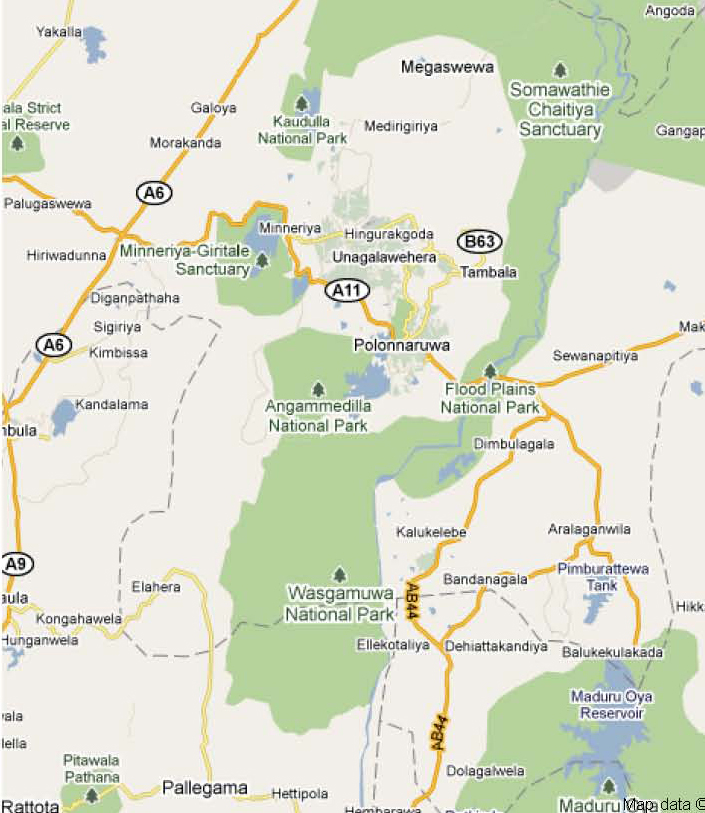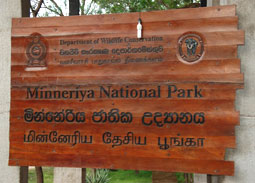Polonnaruwa: hub for 1o wildlife parks and 2,250 km2 of Protected Areas
Our research site at Polonnaruwa is encircled by 10 different national parks and sanctuaries. Most of these are laid out around major river systems or water reservoirs (tanks) that had been built for irrigation purposes centuries ago. They provide a network of large forest patches for the seasonal movements of elephants among them. These protected areas also support a diversity of plants and animals that is typical of the lowland dry-zone of Sri Lanka. The parks differ mainly by slight variations in climate and rainfall, and by the nature of their water bodies and flora. Each park has its own rich history and culture; some offering important holy places of worship.
Eight of these parks can be reached from the Primate Research Station (PRS) or monkey camp, within 30 to 90 minutes travel time. Together this cluster of parks constitutes the largest protected area, over 2,250 km2, in Sri Lanka.

Protected areas within close distance to Polonnaruwa
The protected areas occur in neighboring (often contiguous) sets that share similarities in geography and history.
- The Minneriya and Kaudulla National Parks, though separated by unprotected habitat, are joined by an ancient irrigation channel that carries water from the Minneriya reservoir to the Kaudulla one.
- The contiguous Somawathie and Flood Plains National Parks, along with the Trikonamadu Nature Reserve, encompass the flood plains of the Mahavelli river.
- Wasgamuwa and Angamedilla National Parks are contiguous and laid out around two major rivers, the Mahavelli and Amban Ganga, and serve as catchments for the Parakrama Samudra and Minneriya reservoirs.
- The Maduru Oya NP stands on its own as a catchment for the large reservoir by the same name in its center.
- The hilly Ecopark and Ritigala Reserve are catchments areas for the Huruluweva reservoir and smaller tanks. The high altitude of Ritigala has a climate akin to the central hills of Sri Lanka, and provides for special habitats.

